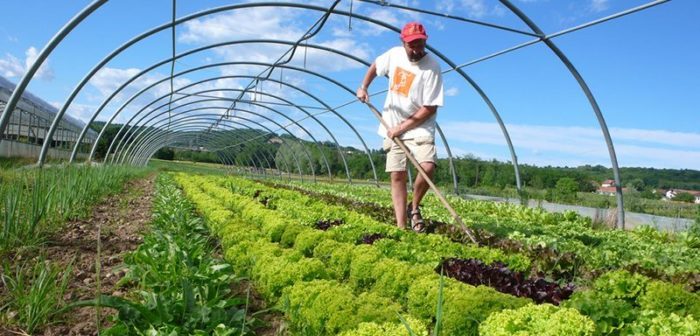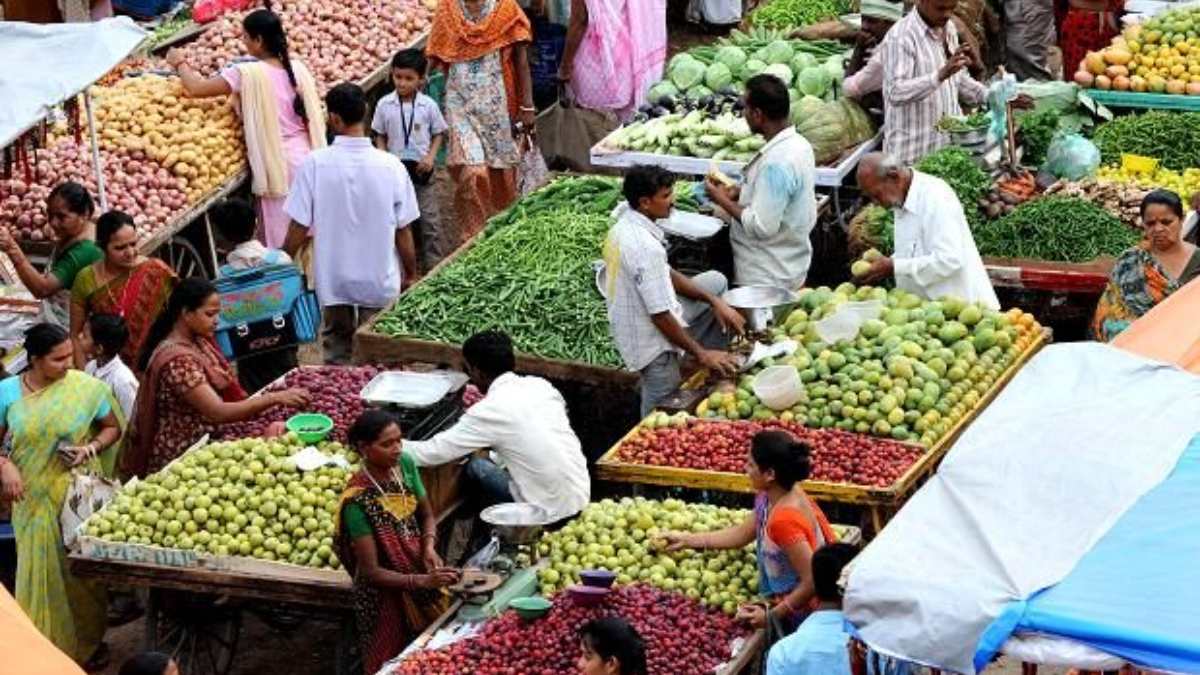Depending on the market system, the means by which goods reach different locations. Agricultural marketing is the process of putting together, storing, processing, transporting, packaging, grading, and distributing various agricultural commodities across the country.
Prior to independence, farmers suffered from inaccurate weighing and account manipulation while selling their produce to traders. Farmers who lacked the necessary information on market prices were frequently forced to sell at cheap prices. They also lacked the necessary storage facilities to keep their products for later sale at a higher price.
Even today, more than 10% of farm products are thrown away owing to a lack of storage. As a result, government involvement was required to restrict the operations of private dealers. Here are four such steps that were implemented to improve the marketing element.
- The first step was to regulate markets in order to establish a more orderly and transparent marketing environment. This approach helped both farmers and consumers in the long run. To fully fulfill the potential of rural markets, around 27000 rural periodic marketplaces must be developed as regulated market locations.
- The supply of physical infrastructure facilities such as roads, railways, warehouses, godowns, cold storage, and processing units is the second component. The current infrastructure facilities are insufficient to satisfy the rising demand and must be upgraded.
- The third government program is cooperative marketing, which aims to get fair prices for farmers’ products. The function of cooperatives is demonstrated by the success of milk cooperatives in changing the social and economic landscape of Gujarat and other parts of the country. Cooperatives, on the other hand, have recently suffered setbacks due to insufficient coverage of farmer members, a lack of a proper relationship between marketing and processing cooperatives, and poor financial administration.
- The fourth part is policy measures such as ensuring minimum support prices for agricultural products, the Food Corporation of India maintaining buffer stocks of wheat and rice, and the Public Distribution System (PDS) distributing food grains and sugar.
These devices are designed to secure farmers’ revenue while also delivering subsidized food grains to the poor. Private trade (by money lenders, rural political leaders, huge merchants, and wealthy farmers) predominates in agricultural markets, despite government intervention.
The necessity for government action is apparent, especially when the private sector handles a substantial portion of agricultural products. With government participation in many forms, agricultural marketing has come a long way. Some researchers suggest that if government intervention is limited, the commercialization of agriculture provides enormous opportunities for farmers to earn larger wages.
Emerging Alternate Marketing Channels
Farmers have learned that selling their products directly to consumers enhances their income. Apni Mandi (Punjab, Haryana, and Rajasthan), Hadaspar Mandi (Pune), Rythu Bazars (vegetable and fruit markets in Andhra Pradesh), and Uzhavar Sandies (farmer’s markets in Tamil Nadu) are some instances of these channels.
Furthermore, several national and multinational fast-food chains are increasingly entering into contracts/alliances with farmers to encourage them to cultivate high-quality farm products (vegetables, fruits, etc.) by providing them not only with seeds and other inputs but also with the assurance of procuring the produce at pre-determined prices. Such partnerships, it is believed, will assist farmers to reduce their pricing risks while simultaneously expanding market opportunities for farm products.
Fisheries
The water body is revered as a mother or ‘provider’ by the fishing community. The sea, seas, rivers, lakes, natural aquatic ponds, streams, and other water bodies are thus an essential and life-giving supply for the fishing community.

Fisheries development in India has progressed significantly as a result of increased financial allocations and the adoption of new technologies in fisheries and aquaculture. Currently, inland fish production accounts for around 61 percent of overall fish production, with the remaining 39 percent coming from the marine sector (sea and oceans). Fish production currently amounts to 0.7 percent of overall GDP.
Kerala, Gujarat, Maharashtra, and Tamil Nadu are the top producers of marine products among states. Families of fish workers make up a large percentage of the population. Underemployment is rampant, per capita earnings are poor, labor mobility to other sectors is limited, and a high percentage of illiteracy and indebtedness plague the fishing industry today. Despite the fact that women do not participate in active fishing, women make up roughly 60% of the workforce in export marketing and 40% of the workforce in internal marketing. To address the working capital requirements for marketing, there is a need to expand credit facilities for fisherwomen through cooperatives and self-help groups.
Diversification into Productive Activities
Diversification has two components: one is a shift in cropping patterns, and the other is a transfer in labor from agriculture to allied activities (livestock, poultry, fisheries, etc.) and the non-agricultural sector. The necessity for diversification derives from the fact that relying just on farming for a living poses a larger risk. Diversification into other fields is vital not only to mitigate the risks posed by the agriculture industry but also to give rural residents productive, long-term livelihood possibilities.
The Kharif season accounts for a large portion of agricultural employment. During the rabi season, however, it can be difficult to obtain work in places with insufficient irrigation facilities. As a result, expanding into other industries is critical for rural people to get more productive employment and achieve a greater level of income in order to overcome poverty and other hardships.
As a result, linked activities, non-farm employment, and other new livelihood options must be prioritized, despite the fact that there are numerous other options for supporting sustainable livelihoods in rural areas. Because agriculture is already congested, a large chunk of the growing labor force will need to look for work in non-agricultural sectors. The non-farm economy is divided into numerous parts, some of which have dynamic linkages that allow for healthy growth, while others are based on subsistence and poor productivity.
Agro-processing industries, food processing industries, leather industry, tourism, and other dynamic sub-sectors are among the dynamic sub-sectors. Traditional home-based industries such as pottery, crafts, and handlooms, for example, have a lot of promise but a lot of infrastructures and other assistance. The majority of rural women work in agriculture, but men are more likely to work in non-agricultural jobs. Women have recently begun to explore jobs that are not related to farming.
Sustainable Development and Organic Farming

The negative impact of chemical-based fertilizers and pesticides on our health has become more well recognized in recent years. Chemical fertilizers and poisonous pesticides, for example, are heavily used in conventional agriculture, and these chemicals permeate the food chain, penetrate water supplies, injure cattle, deplete the soil, and devastate the natural ecosystem. Efforts to develop environmentally friendly technologies are critical for long-term growth, and organic farming is one such technique. In a nutshell, organic agriculture is a complete farming system that restores, maintains, and improves ecological balance.
To improve food safety around the world, there is a growing demand for organically cultivated food. Organic farming has a number of advantages, including the ability to replace more expensive agricultural inputs (such as HYV seeds, chemical fertilizers, pesticides, and so on) with locally generated organic inputs that are less expensive and so create higher returns on investment. Organic farming also generates revenue through exports, since the demand for organically cultivated crops is increasing. Organically cultivated food offers more nutritional content than chemically grown food, according to studies from throughout the world, providing users with healthier foods.
Because organic farming involves more effort than conventional farming, India will find organic farming appealing. Finally, the produce is pesticide-free and produced in a manner that is both environmentally friendly and sustainable. Organic farming’s popularisation necessitates farmer awareness and willingness to adapt to new technology. Apart from a suitable agriculture policy to support organic farming, insufficient infrastructure and the problem of product marketing are key concerns that must be solved. Organic farming yields have been found to be lower than modern agricultural farming yields in the early years.
As a result, many small and marginal farmers may struggle to adjust to large-scale farming. Organic vegetables, like sprayed produce, may have more flaws and shorter shelf life. Furthermore, in organic farming, off-season crop production options are limited. Organic farming, on the other hand, contributes to agriculture’s long-term viability, and India has a distinct advantage in producing organic products for both domestic and international markets.

